- how many audience or group members require language support?
This will determine the number of primary and backup receivers to rent.
this guide helps you evaluate assistive listening solutions for your event. It will discuss the main ALS technologies and the main considerations when deciding on what to rent or buy.
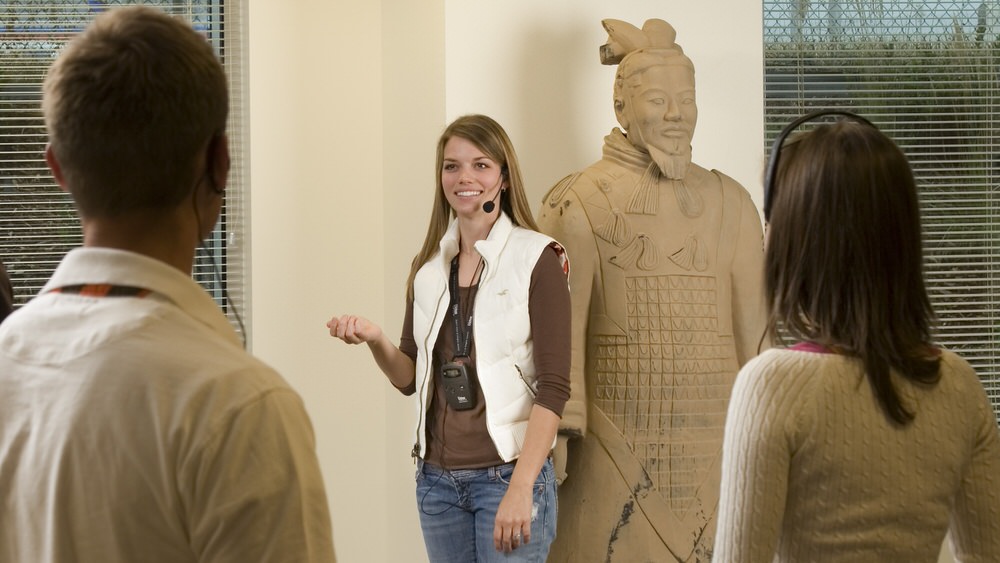
Portable FM system in tour group setting.
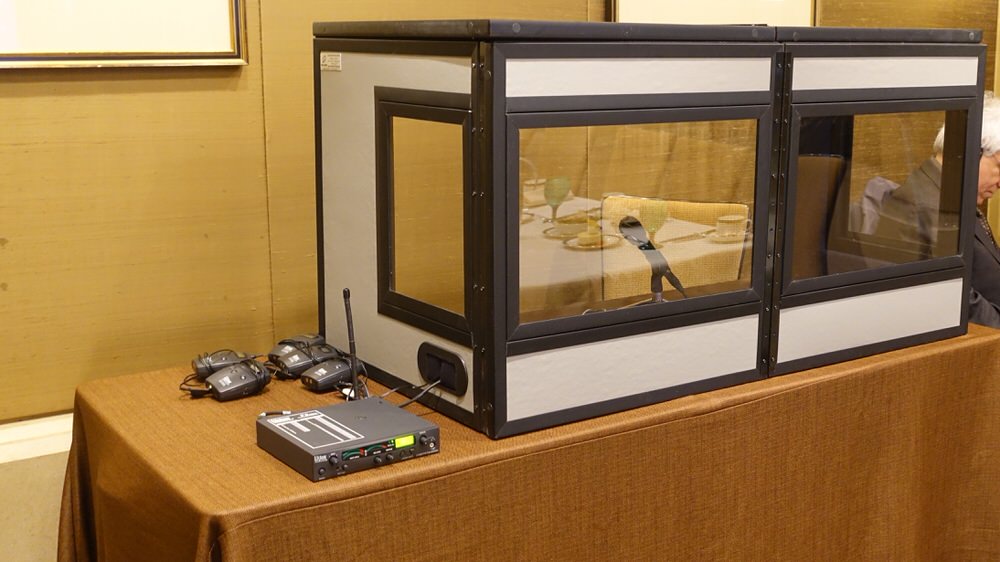
Conference FM system next to tabletop interpreter booth.
common scenario is for an event planner to receivee accommodations requests for Assisted Listening Devices. They wonder: If one is hard of hearing, wouldn’t they have their own listening device? Also, we already provide ASL interpreters; will that suffice? Do we have to pay, or can we put them in touch with the local providers?
how to best address his question ?
RF is the acronym for Radio Frequency and FM stands for Frequency Modulated. While the terms RF system and FM system are frequently used interchangebly, and all FM systems are RF systems, an RF system is not always FM. For the purposes of this guide we focus on RF devices which operate as analog systems in the FM band.
end users will often have a hearing aid. However it is required by law for a venue to provide ALS if audio is integral to any part of their presentation, otherwise they're discriminating against customers with a hearing disability. Much like how the venue is required to have handicapped parking spaces. Not all people with hearing loss know sign language, so an interpreter wouldn't do much good for them. If the presentation falls under the event organizer's responsibility he or she will be required to provide the ALS. The ALS system if not The ALS devices can be rented.
if one is hard of hearing, he or she may have a hearing aid. However this does not mean automatically they will be able to clearly hear the conference proceedings. Also people who do not use hearing aids may still like to use onsite devices for a personal audio experience. If the venue has an induction loop system installed with the necessary devices for patrons to hear the conference proceedings that may be sufficient to meet ADA requirements.
however in the absence of a pre-installed loop system, you would provide another way for patrons to be able to receive reinforced personal audio. This can be achieved via radiofrequency or infrared based technology. Patrons then use headphones connected to a personal receiver on which they can control the audio volume.
neckloops are available that can be connected to a receiver for use with a hearing aid equipped with a T-coil switch or an induction earphone.
professional transmitters – both portable and stationary models - operate much like an FM radio station and are a fast and frequently used solution to broadcast simultaneous interpretation via radio waves.
the FM transmitter is connected to the audio source you want to broadcast and an available FM frequency is selected to broadcast the interpretation. The transmitter picks up the live audio directly from the interpreter console or a microphone. Those sounds are then broadcast over an FM radio signal. The audience members in need of language support wear FM receivers, which are tuned to the same frequency as the transmitter to receive a reliable, clear sound signal from the audio source.
in an optimal RF environment, the broadcast can be picked up from a distance of up to 150 ft using a portable FM transmitter and up to 1500 ft using a stationary FM transmitter). An RF environment is considered optimal when:
a stationary FM wireless conference interpretation system is configured with:
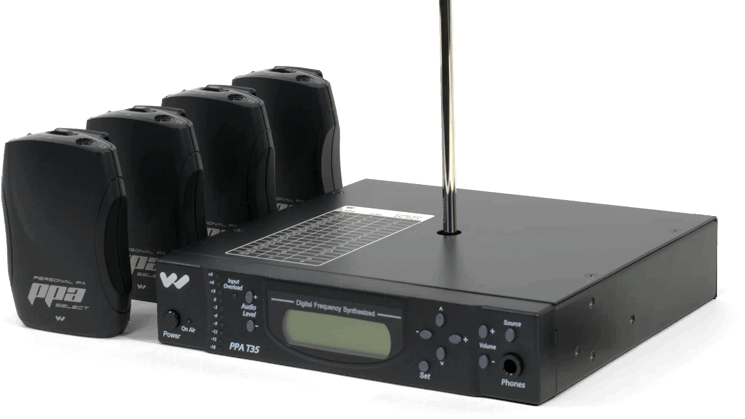
Stationary FM transmitter and receivers.
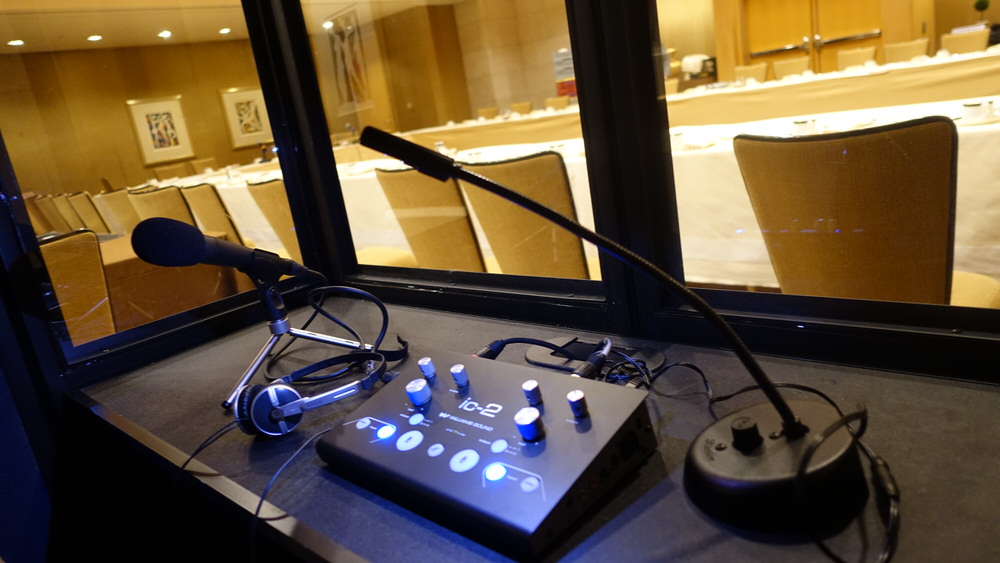
Analog interpreter console with headphones and mic.
the stationary transmitter has a working range of 750-1500 feet and has the advantage of a flexible configuration for a multitude of audio sources. The transmitter is AC powered and the receivers are battery powered.
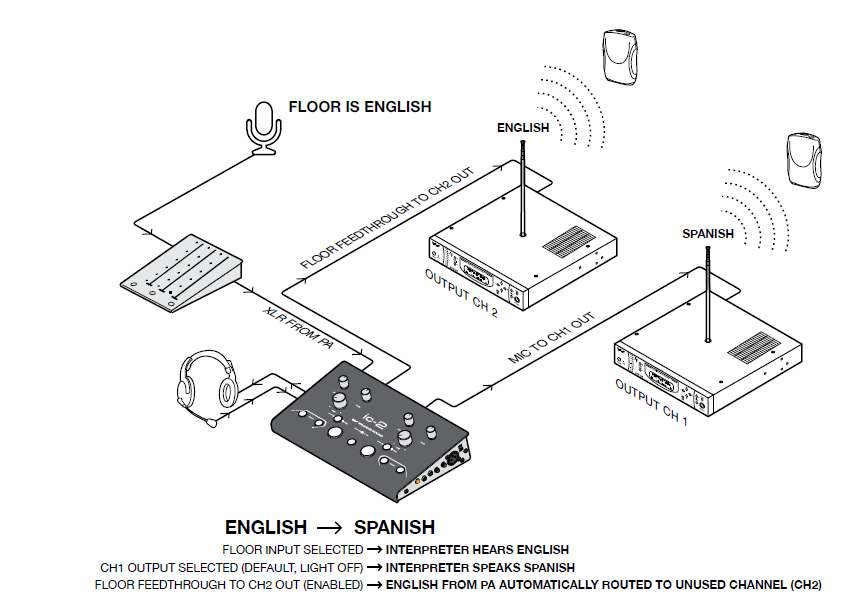
One way RF system with a stationary (desktop) FM transmitter, an analog interpreter console and two FM receivers configured for 2 languages. Additional FM receivers can be added at will.
the setup, operation and dismantling of a stationary FM system is typically done by audio visual technicians trained to operate wireless interpretation equipment and referred to as simultaneous interpretation technicians, or SI technicians.
this type of full-service rental (coming soon) is a good solution for events where the meeting organizers prefer to rely on a professional service provider to facilitate a smooth simultaneous interpretation experience.
A section of the 2101 ADA requirements for assistive listening systems is available on page 8 at https://archive.ada.gov/regs2010/2010ADAStandards/2010ADAStandards_prt.pdf 1. This points out that you can use the total number of seats in multiple auditoriums to determine the total number of receivers required. This section also says that 25% of the receivers must be hearing aid compatible as defined on page 2 at hhttps://archive.ada.gov/regs2010/2010ADAStandards/2010ADAStandards_prt.pdf 02 . The section saying that "earphones that must be worn over the ear" are not hearing aid compatible is open to interpretation. Some headphones can be worn over the hearing aid (instead of the ear) and then use magnetic coupling into the T-coil in the hearing aid, the same as a telephone does. However, since neck loops are easily accessible, it's probably worthwhile getting them also.
The following considerations are a good starting point to determine if a portable RF system could be a good fit for your event and what system configuration you will need for the simultaneous interpretation.
a bodypack RF system is a cost effective solution to transmit simultaneous interpretation provided certain conditions are met. Some of the discussed variables that can reduce the range or weaken the transmission signal are hard to predict without onsite testing. To warrant a seamless interpretation experience, try to test the bodypack RF interpretation system onsite ahead of time to figure out the actual transmission range you have available.
if you experience dropouts in some areas or on some channels and changing the room layout or the channel doesn't solve the problem, you can contemplate upgrading to a more powerful system and have the technical aspects handled by a professional service provider. Testing in advance will give you enough time to do this.
there is technically no limit to the number of RF receivers that can be used in conjunction with the bodypack RF system, although best results may be achieved in smaller settings with 20-30 attendees in need of interpretation. You can try using the system with more attendees as long as everyone is within the working range of the portable FM transmitter. As you plan the layout of the room try to keep everyone needing language support close to the interpreter and try to test beforehand.
call us at 212-489-6035 to speak with a interpretation equipment specialist.
learn more about our interpretation equipment rentals.
*NOTICE: This guide is provided to iProbe customers to help prepare for use of interpretation services and interpretation equipment rental and reduce the possibility of issues occurring at time of event due to improper operation of interpretation equipment by customer or insufficient planning during the event preparation phase. It is NOT intended to be a comprehensive guide for renting interpretation equipment or contracting interpretation or related services. We make no warranties, express or implied, regarding this information. Proper event planning is the sole responsibility of the organizer. For more information and additional guidelines, refer to your contract, or contact iProbe. Refer to the current iProbe Service Guide for terms, conditions, and limitations applicable to iProbe services.